Meneage Archaeology Group – The excavation of a Romano-British settlement at Boden, near Manaccan.
Following the excavation of an Iron Age fogou and Bronze Age house MAG are currently focussing their attention on two areas of apparent Romano-British date, where finds suggest activity between circa AD50 – AD200. Chronology is tentative at this stage, pending specialist analysis of finds and scientific dating.
Romano-British structure
Excavated features include the remains of a stone structure with the appearance of a stone rubble foundation or collapsed wall. Material accumulated over this ‘wall’ has produced large quantities of pottery and part of an amphora (large jar for transporting oil or wine) imported from Spain. A series of postholes associated with the wall suggest an associated timber structure, one of which contained a fragment of granite rotary quern for grinding wheat. Part of the wall covered a steep-sided pit containing numerous sherds of pottery, burnt stones and large fragments of charcoal, representing in situ burning.
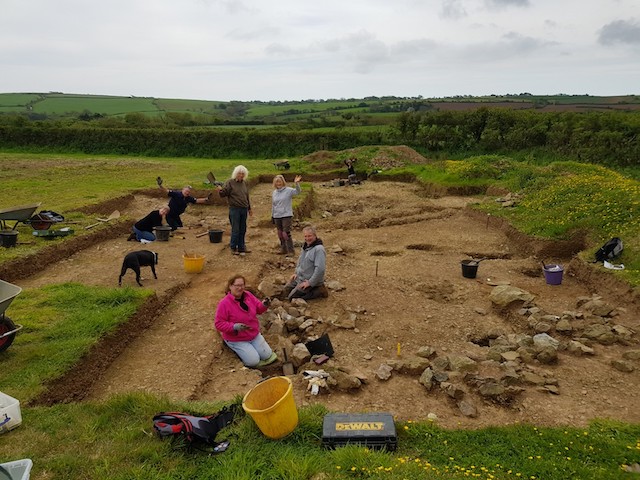
The digging team on 2019 Day 1 – Romano-British structure in the foreground
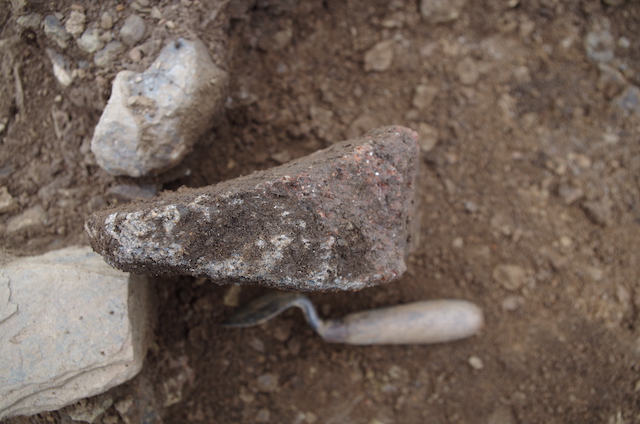
Fragment of rotary quern for grinding wheat
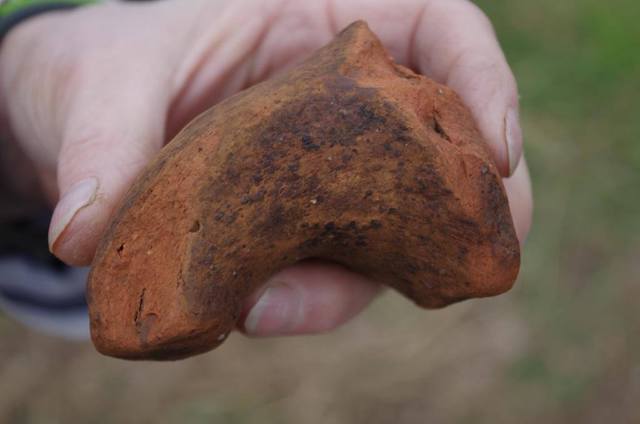
Amphora handle imported from Spain
C-shaped enclosure with central stone-lined pit
To the south are two steep-sided gullies forming a ‘C’ shaped enclosure surrounding a deep pit lined with large stones, possibly ‘robbed’ from the fogou entrance. The function of the pit is unclear but it is hoped that analysis of the soil samples will shed some light. Finds from the central pit and gullies include pottery thought to be Late Iron Age or Romano-British in date (late 1st century BC to 1st century AD) including cordoned wares and Trethurgy-type storage jar sherds (possibly 3rd century AD). Also in the pit were fragments from another rotary quern and a stone spindle-whorl. Part of a stone mould for manufacturing a pewter dish was also recovered (two smaller fragments have been found from deposits nearby). Only three other moulds of this type exist in Cornwall, from St Just, Tintagel Castle and St Mary’s, Scilly.
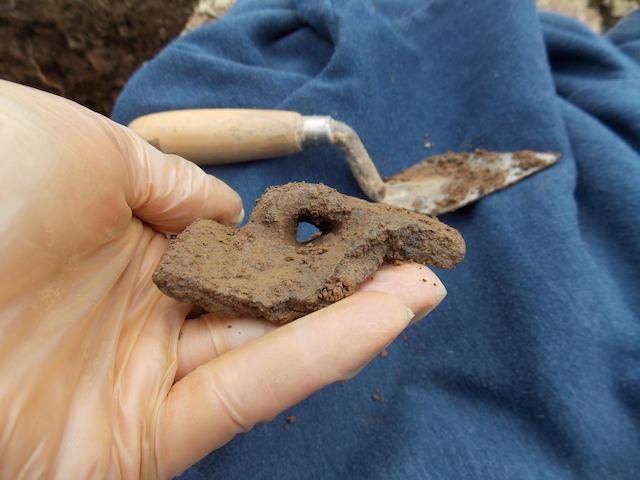
A Romano-British bowl rim excavated from one of the gullies, circa 100 AD

A Romano-British bowl rim excavated from one of the gullies, circa 100 AD
Romano-British House?
A shallow, flat bottomed hollow kerbed with stones was recorded at the southern end of the excavation area, thought to represent the remains of an oval building. Most interesting of all was a pit dug into the floor of the house within which was a large sherd of Samian Ware pottery decorated with three human figures, which has been verified as a bowl made in central Gaul (a type known as Dragendorff 37). A very similar bowl has been found in Exeter with some identical patterns and dated 160-195 AD, and suggests the same maker. This is the largest Samian sherd so far found in Cornwall and the most highly decorated. This raises interesting questions about the contacts between the Boden community and the wider Roman world, and is perhaps an indicator of trade with the world beyond the Tamar, or across the Channel. It was hoped that excavation of the remainder of the structure might reveal more of the bowl, but sadly this was not the case!
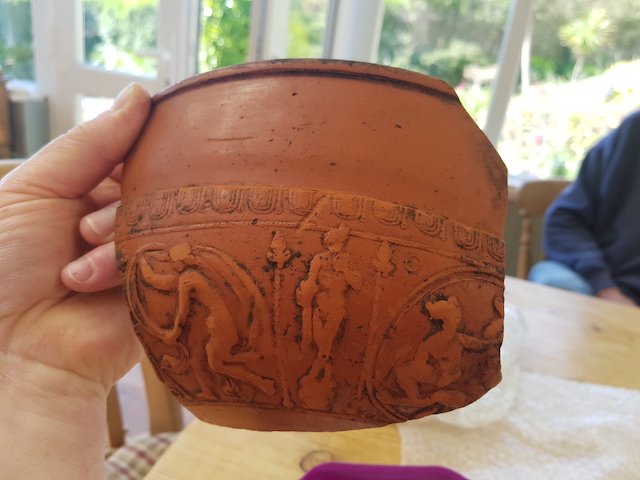 The Samian bowl dated 160-195 AD, made in central Gaul
The Samian bowl dated 160-195 AD, made in central Gaul
Evaluation trenching in ‘Victors’
A 2018 geophysics project in an adjacent field known as ‘Victors’ showed what appeared to be a square enclosure (approximately 25m x 25m) on the crest of the hill. Two test trenches have revealed a steep sided ditch, tapering to a ‘V’ shaped base. Although the ditch has produced no finds, pits within the enclosure have produced sherds of Romano-British pottery. Once excavation is complete and the features have been recorded the trenches will be backfilled, but it is hoped that MAG will be able to return to this area in the future to investigate the site further.
Thanks as always goes to Chris Hosken and his family for allowing access and excavation on his land – Boden is a very special place indeed.
Published: Oct 2019
Author: James Gossip (MAG Chairman and Senior Archaeologist, Cornwall Archaeological Unit)
